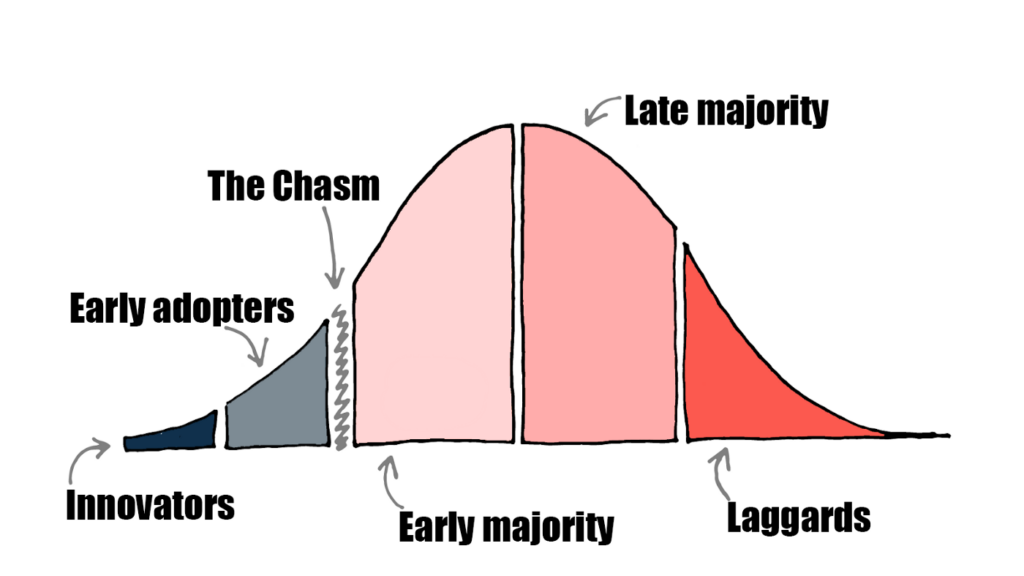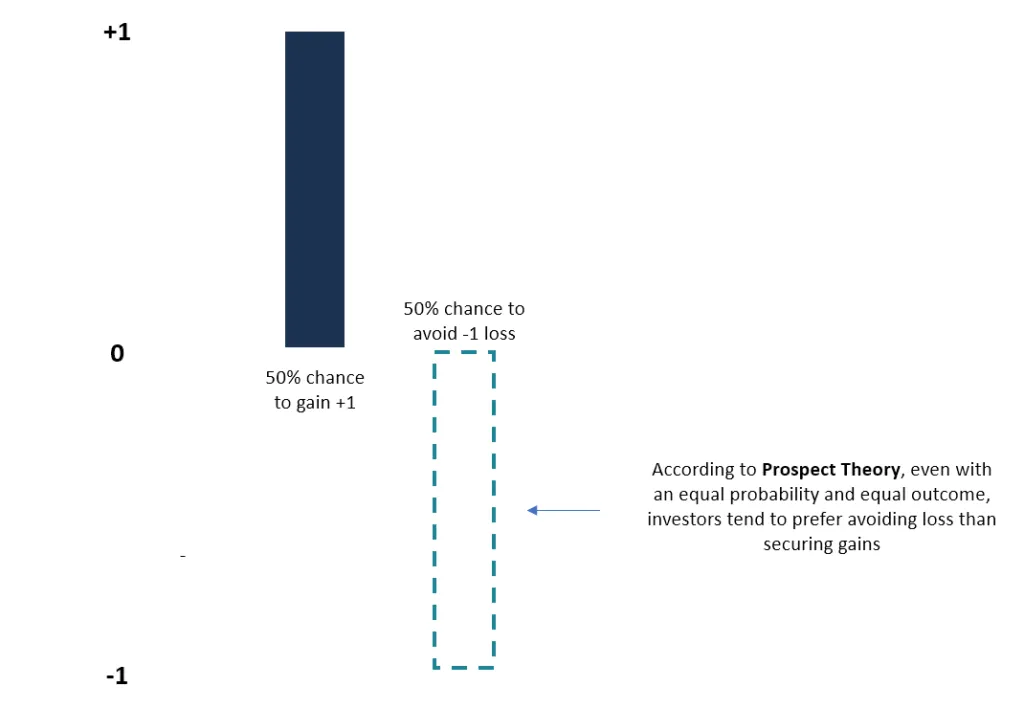This article is not reflective of Ekta as a company. This piece of writing is intended to provide alternative perspectives and angles to the current state of the market for the sake of facilitating diverse thoughts and opinions.
The world we grew up in is not the world we live in now. Some have embraced this dynamism, while others seek to protect the status quo. This is not unique to the world of Web3 but a universal truth, applicable to all markets, industries and fields. As Web3 pushes for more mainstream adoption, debates between adopters and non-adopters have intensified about Web3’s benefits and drawbacks. But this space is not as young as most perceive it to be. So, why has the general public not adopted these innovative technologies and solutions?
Everett M. Rogers (a renowned sociologist and communication scholar) wrote in his book Diffusion of Innovations that there are five different categories of customers for products: innovators, early adopters, early majority, late majority and laggards. If we’re currently in the early adopter stage, what societal and psychological barriers are preventing us from moving into the early majority stage? What is preventing more people from becoming accustomed to Web3 and championing these innovations in their lives?
Below we list a set of theories commonly referred to as “The Chasm”. These theories discuss certain barriers the industry must consider and bridge in order to connect innovators and early adopters to the remaining 84% of the population.

Prospect Theory
Developed by Economic Nobel Prize Winner, Prospect Theory is a relevant view to why the general public has hostility towards Web3. The most relevant aspect to addressing the adoption chasm is the concept of loss-aversion: the difference in perception between gains and losses due to our cognitive biases. Losses loom larger than gains and are especially heightened in times of low sentiment (bear markets and recession fears).
Please try this thought experiment:
Consider the value of 1000 $EKTA, regardless of the time of publication.
If you were to receive 1000 $EKTA tokens out of nowhere, how would you feel?
On the other hand, if 1000 tokens disappeared from your wallet — what would that feel like?
The intensity is not the same. The Prospect Theory describes the unequal weighting of these feelings and notes that when all things are equal, people preferred to avoid losses rather than to risk making a similar gain.

In an industry where speculation and “tulipmania” are frequently used in media coverage of the crypto space, FUD, or fear, uncertainty and doubt, often drive investment decisions. As seemingly rational agents, people aim to maximize their returns and minimize their losses — and when their risk tolerance is not high enough to engage with an industry that features both volatility and FUD — people tend to avoid Web3 altogether.
A Fixed Mindset
Dr Carol Dweck, an American scholar known for her work on the psychology of mindsets, describes a pair of attitudes in her research: the fixed mindset vs the growth mindset. Fixed mindset individuals view skills and abilities as fixed, and growth-minded individuals perceive them as fluid. These fixed-minded people view challenges as something to avoid, are risk-averse and have a tendency to be less resilient. Additionally, people with this world view often believe that effort is unnecessary, and that it is only exerted when one is not ‘good enough’ to do things naturally.
With Web3 in mind, no one is a certified expert.There is no set standard to accomplish, and no defined path to follow or certification to complete.
With Web3 in mind, no one is a certified expert. There is no set standard to accomplish, and no defined path to follow or certification to complete. To grow and learn, one has to explore, take risks, and make mistakes — an anxiety-inducing concept for fixed-mindset individuals. This is not just applicable to Web3 but the fear of being judged for inexperience and lack of ability is a hidden but powerful barrier to anything new.
Loss of Control
On the topic of risk and risk adversity, the fear or actual loss of control is a consuming thought which remains pertinent in minds. Think about a time when you weren’t in control: your morning had been thrown apart by an emergency, a meeting you planned to run was instead led by your colleague or perhaps your wellbeing is in the hands of someone you do or don’t know. Letting go of the reigns of control is a difficult task for anyone to do and it takes trust and confidence for even the most mindful people to do so. In a permissionless, trustless and decentralized space, these preconditions no longer apply. There are no middlemen which facilitate your transaction to the place it needs to go or reimburse you if something bad happens. You have to give up control and it terrifies people.
Creatures of Habit
This follows a similar theme as the previous point. As humans, we crave routine; a 2017 study identified our preferences for tasks that were familiar and habitual. In an industry that is continuously evolving, consistent effort to complete the same, repetitive task, is tedious and inconvenient. We’re used to being able to access our web or app-based finance solutions and transfer money. We’re not used to opening MetaMask and transferring a balance to another crypto wallet. We’re used to opening Zoopla and browsing real-estate properties in our area. We’re unaccustomed to sorting through the noise and finding projects which link real-world properties to NFTs like Ekta Real Estate. Every action and decision within the Web3 space is deliberate and conscious as people cannot afford to trawl through on autopilot like other industries. It’s new, it’s changing and it’s a proactive effort. And its unfamiliarity can be both scary and tiring.
Utility or Futility?
On a more practical level, a commonly posed question, is what real-world utility do cryptocurrencies and NFTs hold? Today, it exists as an auxiliary financial system on top of the traditional fiat system. From an outsider’s perspective, the exponential growth of Web3 seems suspicious, and the recent negative sentiment fuels the speculative fears of those who look at entering the space. Additionally, the lack of a central resource or a shared agreement on where to start and what to do increases the barrier to entry to non-crypto savvy potential investors and users.
A More Positive Outlook
But is that all there is to it?
No, there are countless other unique reasons and rationales as to why people are skeptical about Web3.
All things considered, why are we here today if there are that many reasons to avoid this space? It’s because despite all of this, there are more positive things to Web3.
Opportunity
This is a new frontier and there are opportunities here that exist in no other industry. Blockchain technology powers DeFi, P2E, DAOs, digital and fractional ownership — the list goes on. In an age where we see some industries sunset and fade away, this space is an exciting area to keep an eye on, be a first-mover, and take advantage of its decentralized nature that delivers a comparatively lower barrier to entry.
Equity Theory
John Adam’s Equity Theory for motivation outlines a basic motivational framework for employees: employees and managers should have a balance of given and taken value. In other terms, the inputs (what an individual brings to an organization) should be relatively equal to the outputs (what is taken from the organization). Web3 works in a similar way: if we hold or invest in a token or NFT collection, we aim to promote it, raise its value or find ways to create more functionality or utility for it.
Optimism
Lastly, it’s good to remember that we are all still very early. There are going to be things that don’t go as planned or as we expected. But those are the growing pains of a rapidly transforming technology, the societal barriers of the status quo, and the balance between existing and potential organizations, groups and communities. We acknowledge the positives and the negatives. However, we choose to focus on the potential and the existing good rather than our fears, uncertainties and doubts.
